PARI-MLFRD Joint Workshop "The Future Direction of Rural Electrification in Myanmar" Detailed Report
PARI-MLFRD Joint Workshop "The Future Direction of Rural Electrification in Myanmar" Flash Report
2015/3/3
| [Date] | Friday, November 28, 2014, 14:00-17:00 |
|---|---|
| [Venue] | Meeting Room, 14 Department of Rural Development, The Ministry of Livestock, Fisheries and Rural Development, NayPyiTaw, Myanmar |
| [Co-hosted by] | Policy Alternatives Research Institute (PARI), the University of Tokyo The Ministry of Livestock, Fisheries and Rural Development (MLFRD), Government of Myanmar |
| [Supported by] | Economic Research Institute for ASEAN and East Asia (ERIA) |
As for the program, presentation slides and handouts, please see the Flash Report.
Background
Electrification of rural areas of Myanmar not served by the existing power grid comes mainly under the jurisdiction of the Ministry of Livestock, Fishery and Rural Development (MLFRD), Government of Myanmar. The MLFRD is now preparing a new electrification law in parallel with the revision of the Electricity Law by the Ministry of Electric Power (MEP), Government of Myanmar, which is being carried out with the support of the Asian Development Bank (ADB). Against this background, PARI has been conducting research on the rural electrification of Myanmar while advising and proactively cooperating with the MLFRD as part of its outreach activities. It is also sharing primary data, exchanging views, and holding policy workshops1 with concerned ministries and agencies.2
As part of these activities, PARI and MLFRD held a workshop, entitled "The Future Direction of Rural Electrification in Myanmar", in the Meeting Room at the MLFRD on November 28, 2014. The primary goal of the workshop was to discuss and clarify challenges to rural electrification in Myanmar in order to obtain suggestions for future policy options. Therefore, PARI planned to announce the outcomes of joint research sponsored by the Economic Research Institute for ASEAN and East Asia (ERIA) conducted to date. Meanwhile, participants from the MLFRD, other concerned ministries and agencies, and the private sector were being counted on to explain current policies and future expectations.
The secondary goal was to propose policies based on an accurate assessment of the realities on the ground, ensure transparency of the policy discussions, further develop human resources, and sow the seeds for expanded sharing of knowledge among concerned parties by providing an opportunity for various ministries and agencies and the private sector to discuss the issues across organizational boundaries. These goals were shared with the MEP and other concerned ministries and agencies, as well as interested parties, in advance by the MLFRD, and detailed preparations were made with the MLFRD as the secretariat. On the day of the workshop, more than 50 participants, including administrators from concerned ministries and agencies, the Myanmar Engineering Society (MES), and other private sector groups gathered to take part in lively discussions.
Key issues for the rural electrification of Myanmar
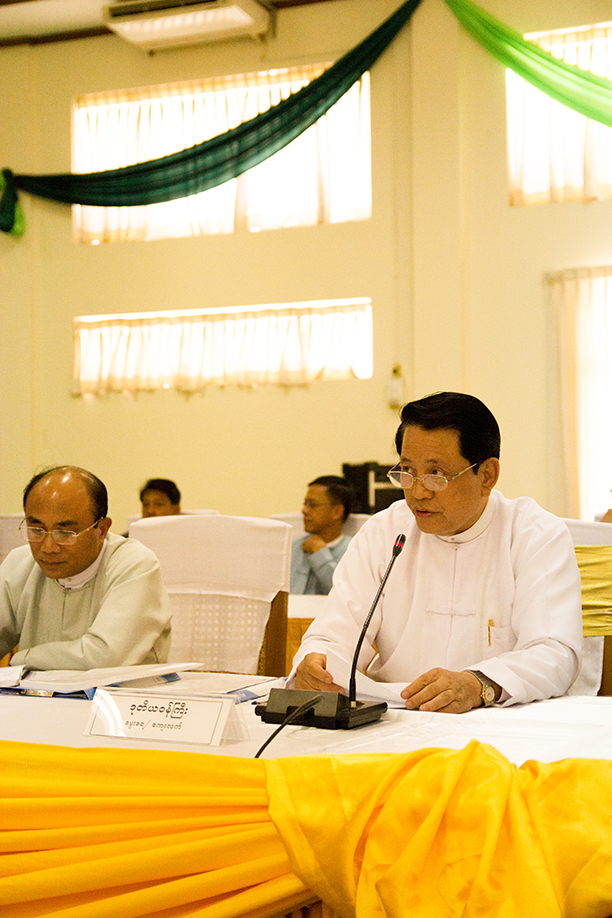
H. E. U Tin Ngwe (Deputy Minister, MLFRD)
H. E. U Tin Ngwe (Deputy Minister, MLFRD) opened the workshop, announcing the MLFRD’s expectations of it. He explained that electricity is a basic need for the future economic development of Myanmar. However, the problem of energy poverty remains serious in Myanmar. Therefore, promoting rural electrification is an extremely high priority policy challenge. Thus, in addition to continuing to work to expand the main national grid, it is necessary to introduce and popularize the use of off-grid electric power, such as Solar Home Systems (SHS). Under the present circumstances, a variety of aid agencies providing uncoordinated support for these efforts, and MLFRD believes that they have to organize their activities.3 They hope that through this workshop, they can prepare the groundwork for the future establishment of an effective rural electrification program.
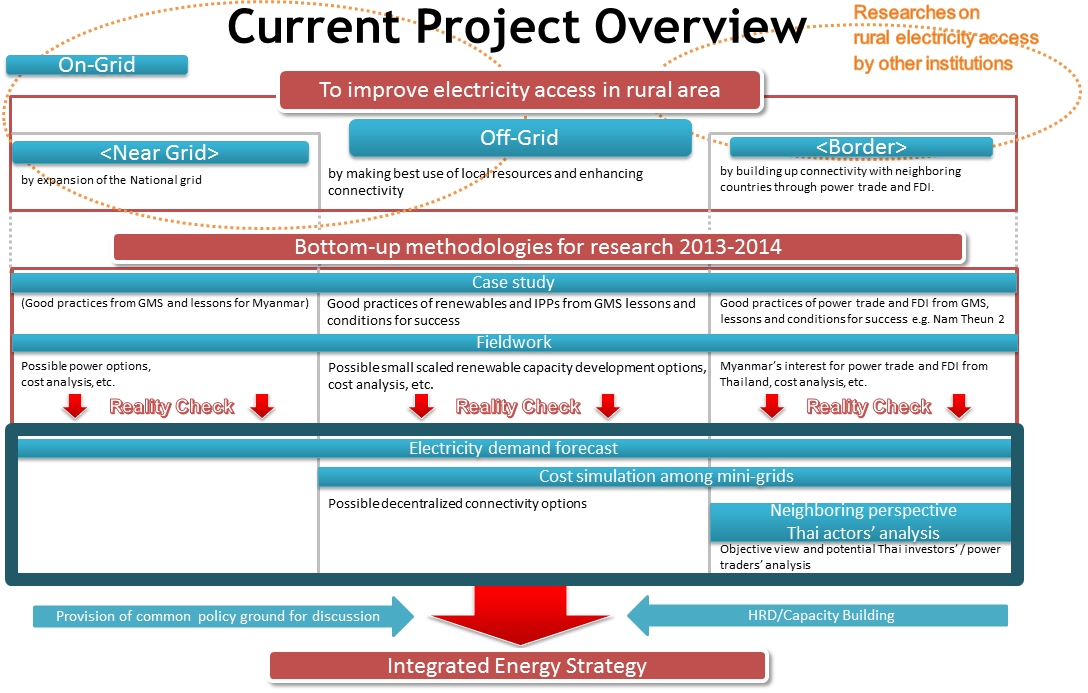
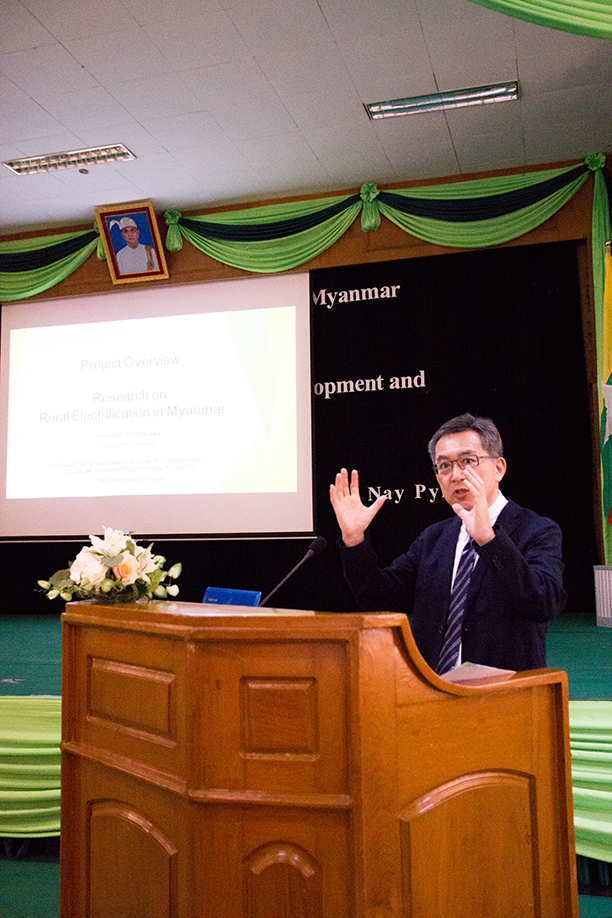
Prof. Yoshikawa (Project Professor, PARI)
Next, Prof. Yoshikawa (Project Professor, PARI) gave an outline of PARI’s research project now in progress. To strategically improve the electrification rate in Myanmar, it is important to divide this large country into three areas The first is the On-Grid area served by the main national grid. For this area, the Japan International Cooperation Agency (JICA) are making their electrification master plan. The second is the Off-Grid area that cannot rely on rapid extension of the main national grid. Here, small-scale hydroepower production and other distributed power production will be carried out. In the third, the Border area along the boundaries between Myanmar and its neighbors, it will be possible to improve the electrification rate by taking advantage of economic transactions with the neighboring countries such as Thailand and China.. Importing electric power is a typical example of this process, and it is important to develop electric power sources with the help of cross-border independent power producers (IPPs).4
Now, with the ASEAN Economic Community (AEC) conference about to start up at the end of 2015, regional economic integration cannot be overemphasized. Located between the great powers of China and India in particular, Myanmar is in an advantageous geopolitical position to share in the economic activity of these neighboring countries. Therefore, in addition to stimulating economic activities in the Border area, it is also definitely important to expand demand in the Off-Grid area, which has a large population. So, this project has been conducting research on electrification strategy focused on these two areas: the Off-Grid and Border areas. Finally, Prof. Yoshikawa announced that final goal was to submit electrification strategy scenario options to the National Energy Management Committee (NEMC).
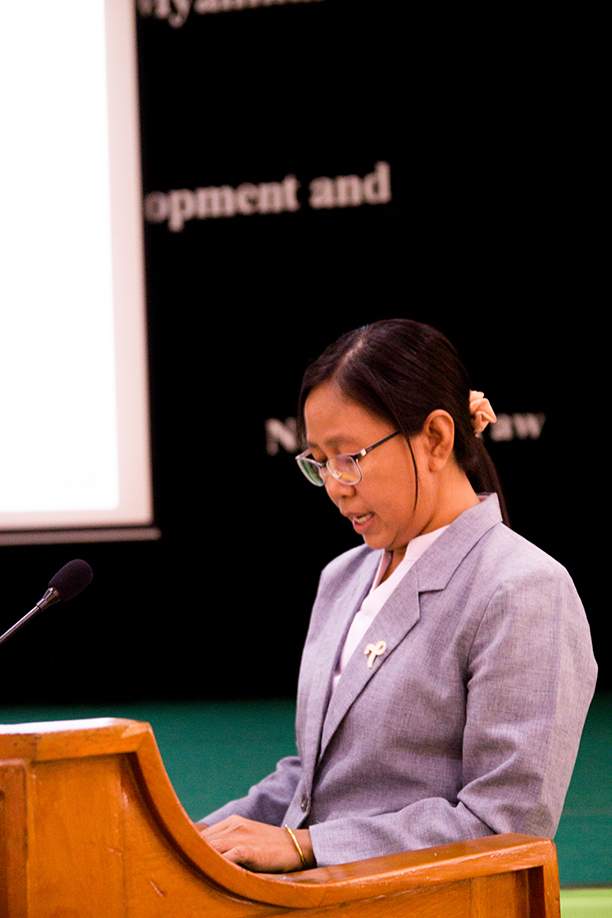
Ms. Mee Mee Htwe (Deputy Director, MLFRD)
Next, Ms. Mee Mee Htwe (Deputy Director, MLFRD) explained the key points of her ministry’s rural electrification policy. Rural electrification is being tackled by the MEP and many other ministries and agencies, but the running of the project comes under the jurisdiction of the MLFRD. The MLFRD, which was formerly called the Ministry of Livestock and Fishery, was renamed and re-launched in August 2013, with rural development, including electrification, as one of its main concerns. The major challenge to achieving rural electrification is obtaining funds, and it is important to establish a framework effectively linking the public and private sectors and a legal system to attract funds. The electrification proposal that is now being prepared discusses specific incentives for attracting funds. Other areas of concern related to electrification are caring for the environment and society, and the ministry is establishing a framework of surveys and evaluations on the environment and the society to be carried out.
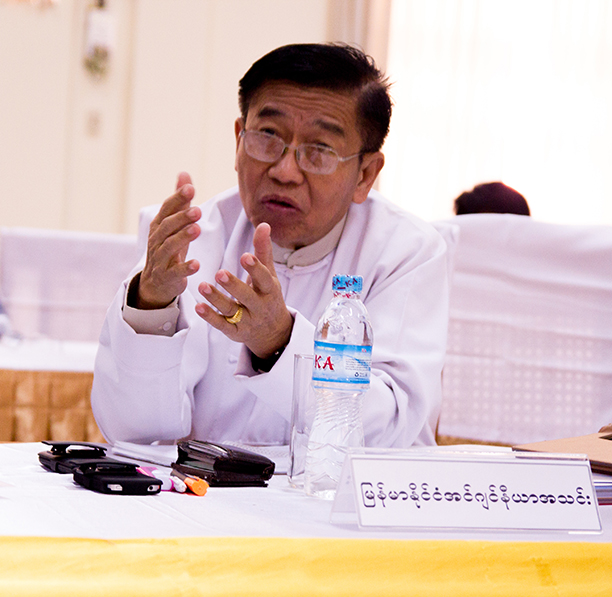
Mr. Thoung Win (MES)
Attracting the private sector in this way is one major key point. Mr. Thoung Win (MES) asked about key points related to attracting private sector electric utility companies. Prof. Yoshikawa answered the question based on the results of the past ERI-PARI Joint Workshops5. He began by pointing out that regarding cross-border IPPs, it was essential to compromise regarding the distribution of power in Myanmar. Considering Myanmar’s present offtake risk that utility companies are aware of, it is probable that the more often the country requests that more power be supplied, the more investors will hesitate to invest in it.6 Secondly, in order to attract the private sector in the medium or long term, it will be important for the Myanmar Government to invest funds to achieve repeated small successes. It may be possible to count on a transformation of investors’ awareness of risk of investing in Myanmar in response to such successful investments. Thirdly, it will be necessary to accompany these measures with a long-term revision of electric power rates in order to avoid the slowing down of private sector investment.
Mr. Thoung Win (MES) also asked questions about 1) the appropriateness of the MLFRD’s present electrification rate improvement target, which sets a goal of universal access by 2030, 2) foreign currency attraction strategies from the perspective of foreign relations, and 3) a desirable energy mix. Prof. Yoshikawa gave his views on these matters. He first pointed out that if realistic targets were not set, there would be a danger that they would end up as empty slogans. Regarding the electrification target value set for 2030, it is desirable to set realistic targets according to the degree of progress they achieve in improving the electrification rate in the next few years. Secondly, in response to the economic integration of ASEAN, the Thai border will become increasingly important. It is also important to strengthen economic cooperation with India to establish omnidirectional diplomacy. Thirdly, it will be important to establish a diverse electric power source configuration that includes coal and gas to replace Myanmar’s present dependency on hydropower for 70% of its power. It will be important to accompany this with concerns about environmental load by using clean coal technology to deal with the problem of global warming that has arisen in recent years.
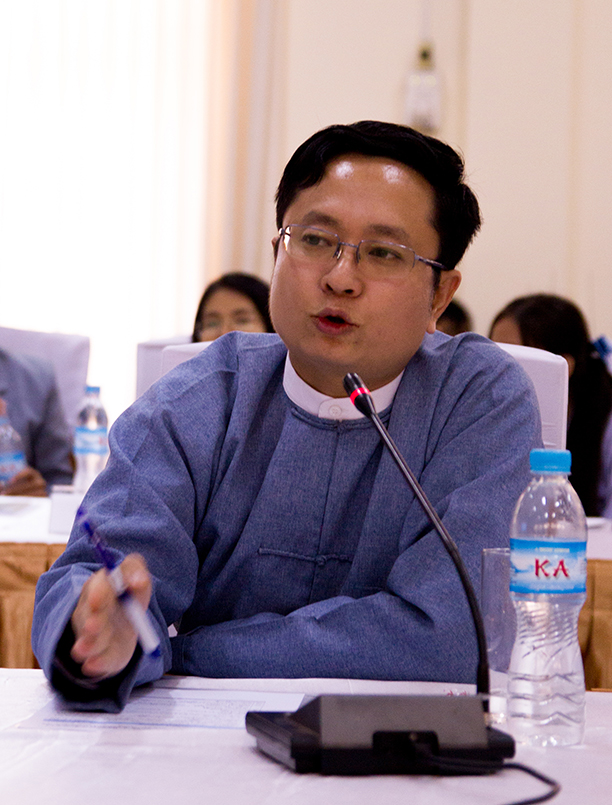
Dr. Zarni Minn (Deputy Director, MLFRD)
Next, Dr. Zarni Minn (Deputy Director, MLFRD) asked two questions: First, he asked about building peace between the multiracial groups living in the boundary zone where electric power development is anticipated. Prof. Yoshikawa stressed that there was no need to hasten electrification in regions where it might obstruct peacebuilding. In addition, it is important to strategically select regions for priority electrification considering not only the state of such peacebuilding efforts but the best approach to the conduct of diplomacy. Myanmar probably have to refer to similar cases in other countries regarding the establishment of specific strategies. The Dr. Minn’s second question concerned a definition of rural electrification. Prof. Yoshikawa explained that it was necessary to handle definitions carefully. In other words, if electrification is loosely defined, it will be easy to achieve the electrification rate target. On the other hand, if it is too loosely defined, there would a possibility that electrification would not boost the economy. In circumstances where several factors are uncertain, it might be premature to explicitly discuss the definition of electrification.
Past efforts by PARI
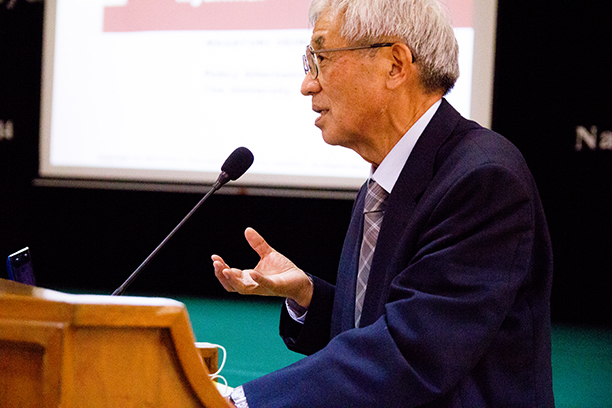
Mr. Seino (Project Researcher, PARI)
Mr. Seino (Project Researcher, PARI) presented the results at this stage of a survey, “Demand projection for rural electrification in Myanmar”. He began by introducing the background: electrification plans in Myanmar that are now being developed by various international organizations. The Japan International Cooperation Agency (JICA) is preparing its electricity master plan in Myanmar. It will set out medium to long-term plans for electric power sector development, with 2030 set as the target year. The World Bank (WB) and Asian Development Bank (ADB) are also implementing rural electrification plans and reusable energy introduction plans under a variety of frameworks. The University of Tokyo is researching ways to contribute to rural electrification projects in Myanmar from a neutral perspective based on the process of these plans. Subsequently, the professor presented results of the cost estimation of the off-grid electrification (electrification not based on transmission by the main national grid) household rate and the additional equipment required for a scenario where the target electrification rate for 2030 is set at 70%, based on the premise of a low-demand case being put forward among the plans the JICA proposes. It counts on off-grid electrification being necessary for 16% of all households, which could require supplementary equipment for approximately 434MW. In this situation, about 40% of all the households in rural communities will remain in areas without an electricity supply. Professor Yoshikawa stressed that from the perspective of universally supplying electricity, it was inappropriate to recklessly plan the expansion of the grid because even if the grid spreads into every part of Myanmar in the future, there will be a strong possibility that the supplying of electricity to cities will have to be prioritized, leaving the issue of adequately supplying rural regions in a state of uncertainty. In conclusion, he added that this cost estimation was unavoidably based on a number of estimates of population, so it was essential to provide more statistical data in order to continue research in the future.
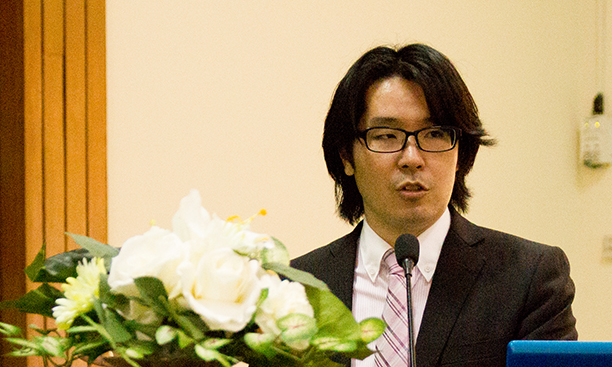
Mr. Sasaki (Project Researcher, PARI)
Next, Mr. Sasaki (Project Researcher, PARI) announced the results of an estimation of the cost required for rural electrification, with the target set at an electrification rate of 70% by 2030. First, villages that could be the focus of off-grid electrification were categorized into a total of six cases based on three electricity demand cases and two environmental conditions.7 For these village s, combinations of multiple sources, including photovoltaic, diesel, and biogas power generation, batteries, converters, and hydropower generation, were hypothesized, and the minimum cost combination was calculated for each case on a trial basis.8 The total cost of off-grid electrification was calculated by multiplying the cost of each case by the corresponding number of villages. Based on the results, the budget required up to 2030 if investing in an on off-grid electrification system by micro-grids will be approximately $7.6 billion (capital cost of about $2 billion and operating costs of about $5.6 billion).9 This budget is limited to a rough calculation at the digit level, so various types of primary data, and so on for the various kinds of electric power generators required should be provided.
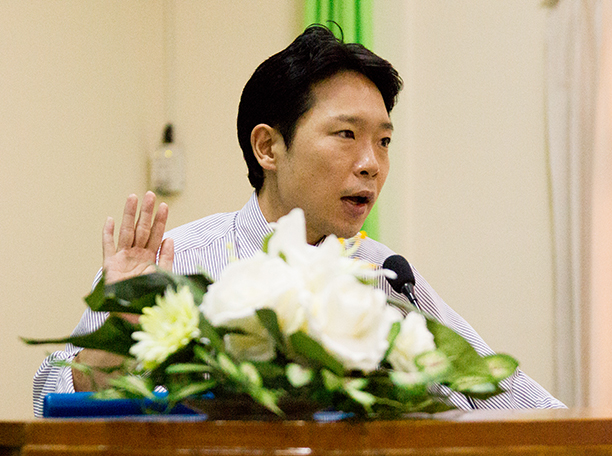
Mr. Yamaguchi (Visiting Researcher, ERI)
Finally, Mr. Yamaguchi (Visiting Researcher, ERI) presented results of past research and future research plans concerning cross-border IPPs, who are key to electrification of the border areas. Until now, the PARI/ERI joint research has conducted comparative analyses of barriers to investment in Thai-Myanmar cross-border IPPs, such as coal thermal power from Dawei and hydroelectric power from the Tasang Dam and the Hutghi Dam. Primary data on such barriers were gathered through interviews with the Thai utilities and by holding meetings with interested parties in Bangkok. The results confirmed that although it is possible to gain benefits of scale through large-scale hydroelectric power production, many of the candidate sites are in regions disputed by ethnic minorities, and the prospect of studying and eliminating these social boundaries will be decisive disincentives to investment.
Consequently, the PARI-ERI joint research is focused on the Salween River, where future large-scale development is predicted, and barriers to dam development are being surveyed by conducting interviews for each case. As one example, the Kunlong Dam, which is the furthest dam upstream, borders a district governed by ethnic minorities that have driven political refugees into China in the past. The construction of the dam is not only forcing the removal of residents of the planned construction district to other locations, it has triggered problems such as the failure to pay compensation and the use of forced labor. The second case is the largest dam, the Tasang Dam (about 7,000MW), where the forced labor of residents displaced by the dam has been reported. Under these circumstances, the number of political refugees escaping to Thailand is rising, and warfare between the Myanmar army and rebel forces occurred in 2013. The third case reported is the Ywathit Dam, which was widely reported in newspapers in Thailand several years ago. It was reported that Karen soldiers killed three Chinese dam inspectors in December 2010. This led to the Myanmar army reinforcing the monitoring of and security at the dam, resulting in a prolonged tense relationship with the Karen army.
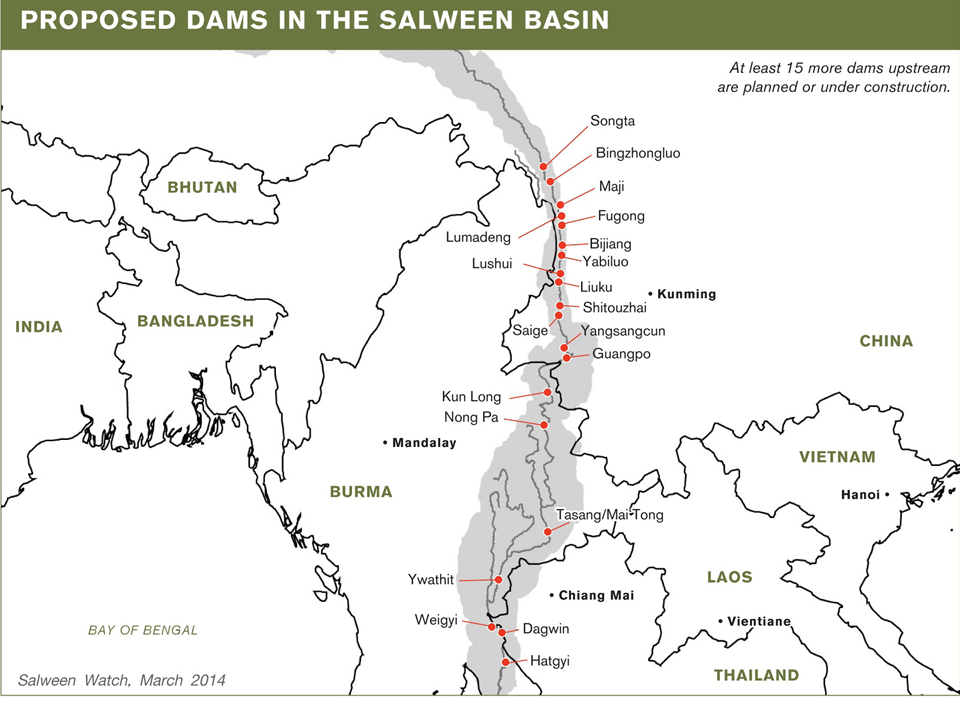
The following has appeared as an explanation of the continued occurrence of such cases: 1) At almost every candidate dam site, relationships between the Myanmar national army and anti-government forces has been already strained. 2) When dam construction started, the forced labor of evacuated residents began, creating political refugees. 3) As a result, resistance by the anti-government forces to the government army strengthened, obstructing the peacebuilding process on both sides. If this narrative is widely accepted as reasonable, construction of dams should probably be halted. What must be kept in mind here is that such an explanation resonates with environmental NGOs or anti-government forces, and hence may become the commonly accepted explanation. A discussion on whether this should or should not be the accepted explanation probably must be guided by a clear understanding of the impact of the dams on the evacuated residents and other interested parties and their awareness of this impact. In the future, a social survey of the “actual concerns of the local community” concerning the construction of dams and “methods of sweeping away these concerns” will be surveyed.10
Towards future cooperation
Finally, Mes. Soe Soe Ohn (Deputy Director, Rural Electrification, Department of Rural Development, MLFRD) reconfirmed the present state of and targets for rural electrification in Myanmar. Up to Fiscal year 2013/2014, about 23,000 villages out of the total of 65,000 villages throughout Myanmar are electrified. Of these, about 60% are provided by electricity generated by diesel power plants, and only about 20% obtain power distributed through the main national grid. With the target for the next 30 months until the end of FY2015/2016 being electrification of 20,000 villages, the aim for 2030 is providing access to electricity to all villages under the UN Millennium Development Goals (MDG). The key to achieving this goal is to popularize off-grid power generation through the use of mini-hydro, biomass, and so on, in addition to extending the main national grid. Therefore, the key points are: 1) organizing off-grid electrification committees, 2) surveying the energy needs by development committees in each village, and 3) requesting budgets at the Congress based on reliable survey results, and, at the same time, separately procuring capital from the private sector and international organizations.
Next, Mr. Thoung Win summarized Myanmar’s future energy policies. He stressed that above all else, the current momentum of the country’s new departure following the coming into office of the civilian government is a vital driving force behind its energy revolution. Aware of such momentum, new bodies are being created separately in priority fields: revising energy prices, creating incentives for the financing of power development, and spreading new energy technologies. On the other hand, the lack of functional links between aids offered by international organizations is still a problem. Many aid organizations are preparing plans for energy policies. But without any means of deciding how to combine these functionally to apply them to priority fields, we are counting more and more on indirect aid from neutral bodies such as the University of Tokyo.
In response, Professor Yoshikawa stated that formally establishing a cooperative relationship by establishing the MOU between the MLFRD and the University of Tokyo will ensure even more effective indirect aid in the future.11 Moreover, he also pointed out that effective administration related to energy, including that by the organizations now being created, is a matter that must be studied, and that without integrating concerned ministries, agencies, and other organizations, it would be difficult for the University of Tokyo to provide effective indirect aid. He also stressed that for rural electrification, it is more important at this time for the government to make investments to achieve more clearly successful small cases, thereby transforming investors’ consciousness of Myanmar’s risk as a country, than to set clear definitions and announce targets. How should indirect aid by the University of Tokyo be provided in the future with such awareness of problems being present? The workshop came to a close with the confirmation that a second seminar will be held in May 2015 to conduct a more concrete study of the effective forms and ways of channeling indirect aid. We wish to conduct effective policy research through productive cooperation.

Notes
- Energy Policy Workshop in Myanmar Report (in Japanese)
- Global Energy Policy and East Asia Research Unit
- The ADB is now conducting the Off-Grid Renewable Energy Demonstration Project (No. 47128-001). In relation to this, the World Bank is supporting national electrification project as part of the Electric Power Project (No. 143988). There should be functional coordination between the donors.
- For example, independent power producers (IPPs) in Thailand produce power in Myanmar mainly for export to Thailand. Part of the power generated is supplied within Myanmar.
- See “Event Reports” section of this page.
- Investors’ awareness of the offtake risk in Myanmar has been studied by the PARI-ERI Joint Workshops. Refer to the Event Report: The 3rd PARI-ERI Joint Workshop Detailed Report, etc.
- Power demand levels were calculated with reference to actual data for a project in the neighboring country, Laos. Regarding environmental conditions, by minutely analyzing the possibility of accessing hydroelectric power, it was assumed that only about 10% of rural villages in Myanmar could generate hydroelectric power.
- The commercial software, HOMER, was used for a calculation made to optimize the configuration of off-grid power.
- This calculation is tentative, and it has not been adequately coordinated with the JICA, ADB, or WB projects. In the future, detailed analyses will be conducted to perform calculations that conform more closely to reality.
- This result will be studied at a future PARI-ERI Joint Workshop.
- Dispatching experts and providing information will be the major cooperative items of the MOU.


